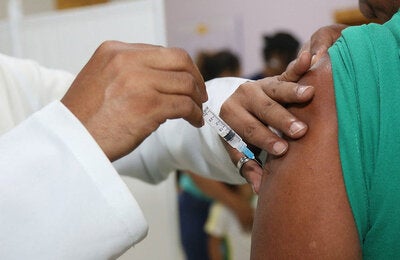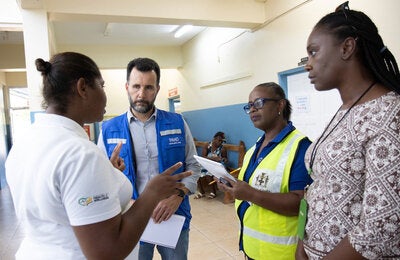
Washington, D.C., November 16, 2018 (PAHO / WHO) — A new manual launched by the Pan American Health Organization/World Health Organization (PAHO/WHO) and the Robert Stempel College of Public Health and Social Work, Florida International University (FIU) calls on countries in the Americas to set up programs to optimize the use of antimicrobials as a way to prevent resistance.
The manual, “Recommendations for Implementing Antimicrobial Stewardship Programs in Latin America and the Caribbean: Manual for Public Health Decision-Makers,” was launched today during World Antibiotic Awareness Week 2018, and aims to provide practical guidelines for health authorities, and recommendations for hospital managers and health workers on cost-effective interventions that tackle antimicrobial resistance.
“Antibiotics are responsible for having saved millions of lives all over the world, but we are currently experiencing unprecedented rates of resistance to some of the most common treatments,” said Dr. Marcos Espinal, Director of the Communicable Diseases and Environmental Determinants of Health unit at PAHO. “It is vital that efforts are stepped up to preserve these achievements, reduce the impact of resistance and ensure continued treatment and prevention of infectious disease.”
Antimicrobials, or antibiotics as they are more commonly known, are vital in the prevention and treatment of infections. Antibiotic resistance occurs when the microorganisms in infections change in response to the use of these medicines, rendering them ineffective.
Evidence shows that antimicrobial resistance increases with the overuse of antibiotics. This is primarily due to antibiotics being misused to treat symptoms of cold and influenza, which are viral infections, or as a preventative measure following surgeries. It is estimated that up to 50% of antibiotic use is inappropriate, adding considerable costs to patient care, and increasing morbidity and mortality. This inappropriate use can be fostered by issues such as over-prescription, and easy access via over-the-counter sales and internet sales, which are widespread in some countries.
Antimicrobial stewardship
The aim of antimicrobial stewardship is to promote optimization of antimicrobial use at national and local levels in accordance with international standards in order to ensure the correct choice of antimicrobials at the right dose based on evidence.
Antimicrobial stewardship programs involve coordination with a variety of healthcare workers, including physicians, pharmacists and microbiologists, as well as infection prevention specialists, nurses and information technology staff.
Recommended strategies for antimicrobial stewardship include the implementation of prescription-based practices in hospitals, such as the reassessment of antibiotic prescriptions after 48-72 hours of onset of treatment; pharmacy-driven interventions, to ensure correct usage and dosage; and data-driven interventions such as ensuring that microbiology records are easily accessible at the point of care.
“Antimicrobial stewardship ensures that country’s health care systems have the programs in place to address the determinants of antimicrobial resistance and to implement the policy, programmatic and educational initiatives necessary to promote the judicious use of antibiotics,” added Espinal.
Antimicrobial resistance response in Latin America
In Latin America, antimicrobial resistance is an urgent public health priority. The Region is already seeing an increasing trend of resistance in community and hospital infections. Over the past two decades, the Americas has been a pioneer in confronting antimicrobial resistance from a public health perspective, including laboratory-based surveillance, increased monitoring, implementation of awareness campaigns and development of antimicrobial stewardship programs in hospitals.
Antimicrobial stewardship interventions have been coordinated by PAHO and other health organizations in the Region, and initiatives to control the use of antibiotics, through mandatory prescriptions for example, have already proven successful, resulting in a 12% reduction in use in Mexico. Following the implementation of this regulation in Chile in 1999, Colombia in 2005 and Brazil and Mexico in 2010, increments in bacterial infection-related admissions were not detected, highlighting their effectiveness.
Despite these advances, however, efforts towards antimicrobial stewardship must now be increased, and sectors, individuals and organizations working in the area must be better integrated, in order to ensure a greater impact on antimicrobial resistance and to quantify this impact in the Region.




